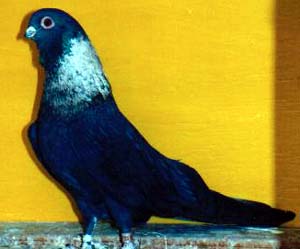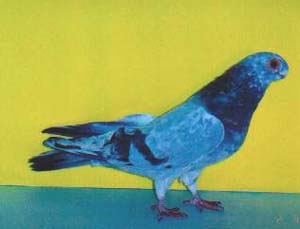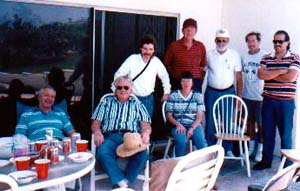Flying birds and Swift managment
The contents of this letter is from e-mail I received in the past and
reflecting an interest in the conventional flying Swifts. As a reminder
they are about 2 inches (5 cm) shorter the the typical show bird and compacted
type of bird. They are capable of maintaining 2 to 3 hours in an optimum
climate of 10 to 20 Celsius or centigrade (40 to 70 Fahrenheit). This
includes the following groups: Bolks with the exception of the Banafsigy.
Mesaweds, Otatis, Anbary Asmar. Safis and Ahmar gohzar families produce
good flying birds as well but need more scrutiny. Rehanis are released
to join the first kit about half an hour before landing or flown alone
on their own pace. They are limited from half to one hour of flying time.
Selecting flying birds:
Selecting flying birds must begin from mating known flying parents. The
problem that many of us tend to do, is selecting mating birds by appearance
and forsaking to verify their flying. The Egyptian system doesn't test
young hens as they become segregated early from the flying kit and before
they become thoroughly tested.
Culling birds should start with slow growing and weak feathered birds
at 4 weeks. Weak feathers are feathers that don't fulminate as the bird
grow.
Settling mating birds:
Many flying Swifts are naturally agitated and restless birds. If you intend
to breed around January from a new pair, then you must mate them around
November. They tend to loose their first clutch of eggs or checks at the
beginning of the season. Remember that this breed is noted for their rich
colors and regal appearance and not as a meat producing bird. It is a
good season when three to four healthy checks are raised from one pair.
If half of them fly as intended to, the pair will be mated for life.
The more refined the birds (as in good show birds with smaller and finer
beaks) the more difficult they raise their young's. Bolks, Mesaweds, Reds,
Otati and Safi show inclined and Hawk-like beaks. While Rehani and Bolk
Banafsigy show a characteristic obtuse angle and grain-like beaks. I have
used a picture of a female rehani (note also the shadow of it's beak)
and an old Safi for my demonstration. This unusual setting makes it hard
for a bird to raise his offspring and foster parents must be used.
Flying birds tend to raise their two young's, because they are stronger
and have less shorter beaks. One might say; why then should I devote time
to a weaker bird or a bird that have difficulty raising his young's? simply
because it wins the show.
Should we select for more devoted parents or other traits ? As long as
standards aren't going to be compromised, then it is considered of an
improvment to the breed. In that case you will find that you need to cull
more, which will improve the overall quality of the stock.
Before we leave these two pictures and go on, I would like you to also
note from the standards point the complete sweep of the head and beak
on the Safi. Also note the prominant elevated forehead (opposite of the
Safi) on the Rehany.



Overseas calls made easy and free:
I made a link that leads to free overseas contacts. You still have to alert the party on the other country to wait for you on the computer. Currently Computer to phone contacts are available from the US, for 4 cents a minute, to any part in the world. I will check it out and let you know. I have also listed the countires that I get my most contacts and best time to call. To check all that out go to contacts and phone link.
Summer newletter:
Our next newsletter will not be likely published untill September or October because of commitments I have with the family and work. Until then have a prosperous season.